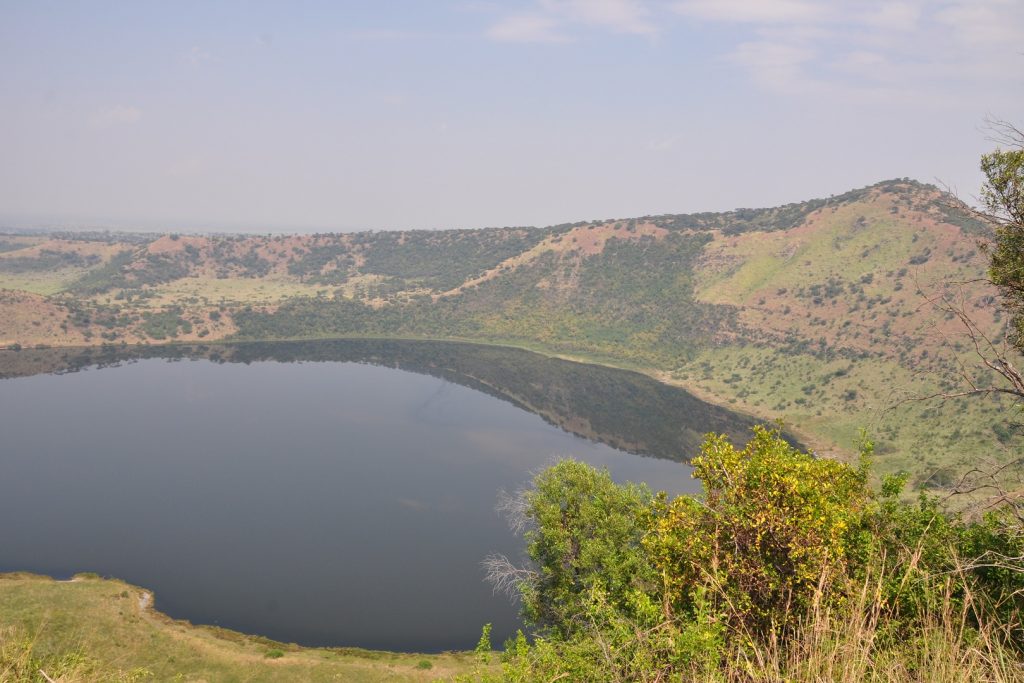Several crater lakes in Queen Elizabeth National Park can be seen. Many extinct volcanoes of a specifically violent type called the ‘explosion craters’ can be found within western Uganda. This is along the East African rift valley escarpment.

Queen Elizabeth National Park has a cluster of ten crater lakes formed from extinct volcanoes. The lakes of Queen Elizabeth are the major source of water for a variety of wildlife. Many animals and birds visit these crater lakes for water and body cooling as well as to wallow in the mad.
Lake Nyamunuka is known and famous for buffaloes. They visit the crater lake to wallow and to eat up the water oil which has a little salt composition. A number of flamingos can also be seen in these crater lakes.
Basically, there are three major concentrations; Katwe Explosion Craters found in Queen Elizabeth National Park. The close by Bunyaraguru Crater Field on the impressive Kichwamba escarpment and the beautiful Ndali – Kasenda Crater Field. These are close to Kibale National Park. Among these, the Katwe Explosion Craters with the enormous Kyemengo Crater are absolutely the most alluring.
About Queen Elizabeth National Park and Its Crater Lakes
Queen Elizabeth National Park which is approximately 1,978 square kilometers (764 sq mi) is one of Uganda’s oldest national parks formed officially, along with Murchison Falls National Park in 1952. It is understandably Uganda’s most popular tourist destination located in the western region of Uganda, spanning the districts of Kasese, Kamwenge, Rubirizi, and Rukungiri.
Visitors to Queen Elizabeth National Park always complement their visit with a gorilla trekking safari in the nearby Bwindi Forest National Park or a chimpanzee trekking expedition in Kibale National Park. Others could opt for a boat cruise on the Victoria Nile to Murchison Falls.
